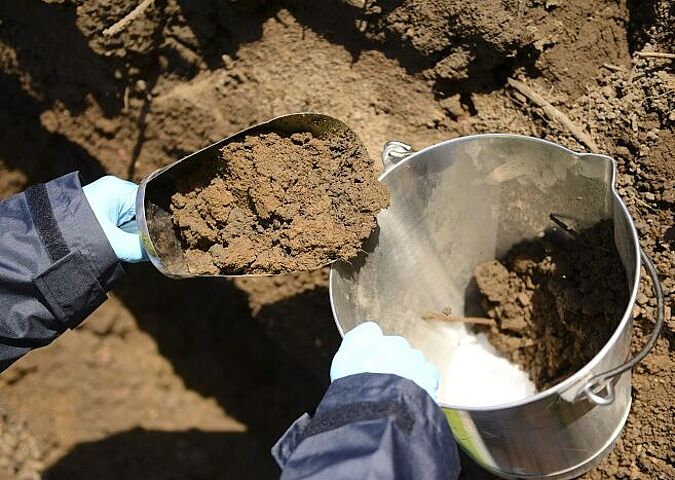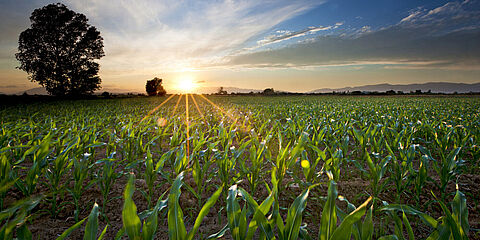Soil analysis at WESSLING: more planning security for your construction project
We support you in your construction project with fast and precise declaration analysis for comprehensive soil analysis. We are represented throughout Germany and can even examine your soil samples and mineral waste within three working days using the express procedure if desired.

With the help of our analysis data, you can, for example, derive exploration and remediation measures for contaminated sites and meet the requirements of the German Federal Soil Protection Ordinance (BBodSchV). This ordinance ensures the sustainability of soil functions and aims to restore them - and we assist you in this. In addition to our advanced analysis, we offer a unique variety in chromatographic and spectroscopic methods for soil analysis.
Further analytical services can be found here in our Environmental Analysis 2025 price list
Soil analyses by WESSLING: expertise and experience for 40 years

Soil analysis has been conducted at WESSLING for 40 years. This is why our experts know that reliable analytical results are initially based on qualified sampling of solid and soil air samples. This also includes special samples such as track ballast, material samples (e.g. asbestos) or insulating materials.
In our laboratories, we use chemical-analytical methods to examine all current parameters and test lists, as in accordance with the federal/state working group (LAGA), ordinance on landfills and long-term storage facilities (DepV), the Federal Soil Protection and Contaminated Sites Ordinance (BBodSchV) and others. Our contact people support you in the selection of the analysis required for your needs and has country-specific regulations in mind.
Our specialists look at sampling and analysis, if required, in connection with consulting topics. This is, above all, required for the areas of soil remediation, land recycling and soil investigation. In this context, we also prepare initial status reports (AZB) under the IE Directive.
Overview of services::
- Dioxins, perfluorinated surfactants (PFT, PFC, PFOS, PFOA), N,S- heterocycles, biotests and toxicity tests, glycols, complexing agents (EDTA, NTA)
- Pesticides, fungicides and herbicides (400 substances, glyphosate and metabolites)
- Chlorophenols, chlorobenzenes, nitrobenzenes and phenols, F2 list, DDT, lindane, atrazine
- Screening methods for unknown analytes
- Soil investigations within the scope of the Sewage Sludge Ordinance
- Analysis of PFAS (per- and polyfluorinated alkyl substances)
Ordinances and laws
Here you will find an overview of the relevant specifications for soil analysis.
- LAGA M20
- German Federal Soil Protection Ordinance (BBodSchV)
- Verordnung über Deponien und Langzeitlager (DepV)
- Verordnung über die Verwertung von Klärschlamm, Klärschlammgemisch und Klärschlammkompost (Klärschlammverordnung - AbfKlärV)
- LAGA TR Boden 2004 gemäß Tab. II 1.2-2 - Tab. II 1.2-5 (Feststoff / Eluat)
- LAGA M20 Boden 1997 gemäß Tab. II 1.2-2 und -3 (Feststoff / Eluat)
Your contact for soil analysis
We will be happy to support you.
- Sarah Gräber
- +49 511 54 700-37
- umweltanalytik@wessling.de









